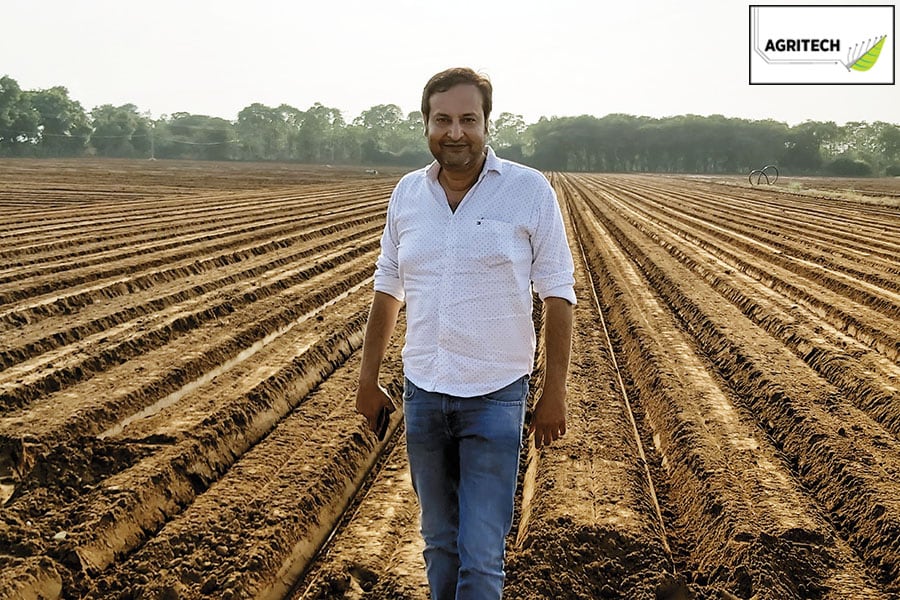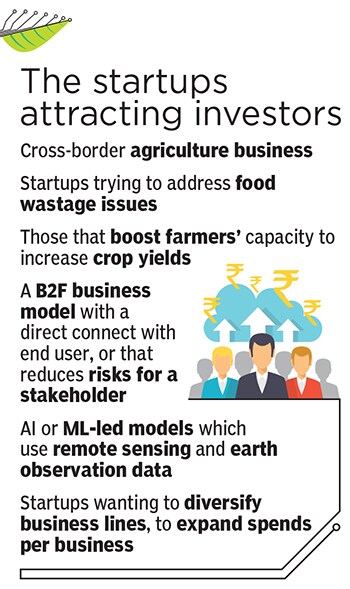
Agritech investors: Not for the faint hearted
Investors don't doubt the potential and opportunities that India's agritech sector provides, but investing here is a game of patience as business models take longer to be productive
 Deepak Pareek, CEO, AGRIWATCH
Deepak Pareek, CEO, AGRIWATCH
With agriculture contributing a fifth of India’s GDP, about 40 percent to total employment and growing at nearly 20 percent CAGR in recent years, one would think private equity investors and venture capitalists would have—like in ecommerce and fintech startups in earlier years—been lining up to make rapid investments into agriculture technology (agritech) startups, as payment gateways and logistics started to get built. But this sector is yet to announce a unicorn.
And for every DeHaat—and later Ninjacart, WayCool Foods and Udaan—invested into in recent years, there are a large number of small- and mid-sized agritech startups that are starved of capital. DeHaat in 2021 raised $115 million as its Series D funding, led by investment firms Sofina and Lightrock. Walmart and Flipkart-backed Ninjacart has raised $154 million through two rounds of funding in the last eight to nine months.
It only indicates that this is a large market offering huge opportunities, but is still full of complexities. Geo-political concerns and perceptions that India has become a protectionist market might increase concerns that investments into agritechs will only come from serious PE/VCs and it might remain limited or slow down again. Does this spell doom? Not at all. The potential for growth for the sector is substantial.
The tech in agritech
“There are two changes that are driving growth: The macroeconomic, domestic consumption move and increasing integration of technology across sectors. Agritech is one of the pieces which is seeing this,” says Rahul Taneja, partner at venture capital firm Lightspeed. “For the longest time, there was no tech in agritech, we only had platforms addressing inefficiencies without leveraging technology,” he adds. All this has changed in the last five to 10 years, where the enablers of the agri economy—payments and logistics—are being built.
The Indian agriculture market is large, which makes it attractive but also “complex”, Taneja further says. The complexities range from seasonality, regional crop diversity and a maze of players including financiers, agri-input providers, buyers, middlemen/brokers, mandis/ FPOs/APMCs and wholesalers/ retailers in cities. “The large market size is seductive but it is important to keep in mind the complexity, which means this is a multi-year problem to solve.” It has, however, also meant longer investment cycles for investors, compared to those in the payments business.





 Lightspeed’s Taneja believes agritech in India is at the great point in the evolution curve. “This is the time for agritech. We do not see the pace of return on investment as very different from e-commerce or fintech. Of course, given the complexity, the agritech businesses may take longer to build. But then again, no sustainable company gets built in three years; every generational company takes seven to 10 years to build.”
Lightspeed’s Taneja believes agritech in India is at the great point in the evolution curve. “This is the time for agritech. We do not see the pace of return on investment as very different from e-commerce or fintech. Of course, given the complexity, the agritech businesses may take longer to build. But then again, no sustainable company gets built in three years; every generational company takes seven to 10 years to build.”



